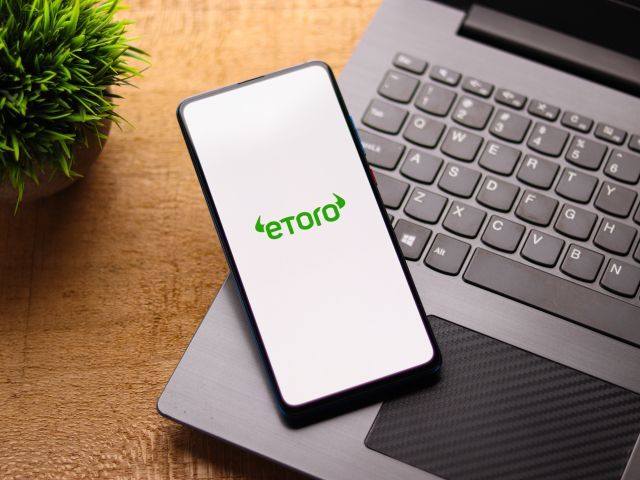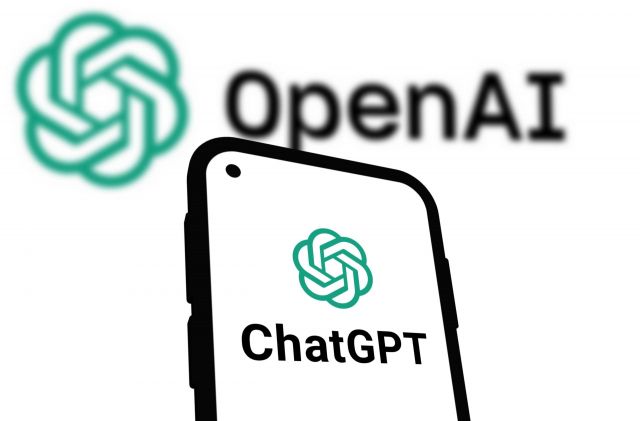INOX Clean Energy IPO: how to trade INOX shares

Create an account Open a demo account
When is the INOX Clean Energy IPO date?
INOX Clean Energy, part of India’s InoxGFL Group, filed for a ₹6,000 crore (60bn rupees) IPO in July 2025, through a confidential draft red herring prospectus (DRHP) (souce: Reuters). The company is expected to list in 2026. The IPO will be one of the largest in India’s renewable energy sector, positioning INOX as a key player in the nation’s energy transition.
INOX Clean Energy is not alone. Over a dozen renewable companies in India – including firms in wind, solar, and green hydrogen – are preparing IPOs worth a combined ₹25,000 crore (~$3bn). This represents a broader clean-energy IPO wave, driven by government incentives, rising ESG-focused capital flows, and India’s ambitious net-zero 2070 target.
Key factors influencing the IPO timing include:
- Policy momentum: India has rolled out Production Linked Incentive (PLI) schemes for renewables and green hydrogen, boosting investor interest.
- Sector appetite: With global investors prioritising ESG assets, clean-energy IPOs are attracting strong demand.
- Market conditions: A stable equity market is needed for large-cap IPOs to price successfully.
- Competition: Rival renewable players like Adani Green and ReNew Power already trade publicly, so timing matters for differentiation.
- Group strategy: InoxGFL Group seeks to unlock value from its diversified businesses by listing its green-energy arm separately.
If all approvals go smoothly, INOX Clean Energy could debut on India’s NSE and BSE in late 2025 or early 2026, making it a bellwether for India’s clean-energy listings.
INOX’s listing is part of a broader surge: more than a dozen Indian renewable companies are queuing up with IPO plans worth ₹25,000 crore. These include solar module makers, hydrogen specialists, and diversified green utilities.
What is INOX Clean Energy?
INOX Clean Energy is the renewable power arm of the InoxGFL Group, one of India’s leading industrial conglomerates with interests spanning chemicals, fluoropolymers, industrial gases, and energy.
The company focuses on developing, operating, and maintaining renewable energy projects, with an emphasis on wind and hybrid (wind + solar) installations. INOX Clean Energy leverages decades of experience in engineering and infrastructure from its parent group to execute large-scale projects across India.
Key milestones in INOX Clean Energy’s history
- 1987–2000s – Inox Group expands into chemicals, industrial gases, and energy infrastructure.
- 2010s – initial investments in wind and solar projects as India pushes renewable adoption.
- 2021 – group announces major expansion into green hydrogen and renewables.
- 2025 – files confidential DRHP for ₹6,000 crore IPO; part of India’s ₹25,000 crore clean-energy IPO pipeline.
INOX Clean Energy’s key features
- Project portfolio – focus on wind, solar, and hybrid renewable energy projects.
- Green hydrogen ambition – Exploring investments in hydrogen production and storage.
- Engineering strength – backed by InoxGFL’s experience in industrial engineering and project execution.
- ESG alignment – positioned to benefit from ESG-focused investment flows and India’s climate targets.
- Market context – competes with listed players like Adani Green, ReNew Power, and Tata Power Renewables.
INOX Clean Energy aims to differentiate itself by focusing on hybrid projects that combine wind and solar for better load balancing. It is also exploring green hydrogen pilot projects, which could be a future growth driver if hydrogen adoption accelerates.
The company benefits from being part of the InoxGFL Group, which already manages complex industrial supply chains and has relationships with large utilities and state governments.
Part of InoxGFL group
INOX Clean Energy benefits from being part of InoxGFL, a group with a long legacy in gases, chemicals, and infrastructure. The group already supplies critical materials for industries like semiconductors and refrigerants, and is leveraging that engineering expertise for energy transition projects.
INOX has executed several large wind farms in Gujarat, Rajasthan, and Maharashtra, with a pipeline that could scale capacity to several gigawatts by 2030.
How does INOX Clean Energy make money?
INOX Clean Energy earns revenue primarily from the generation and sale of renewable electricity.
| Revenue stream | Description |
|---|---|
| Power purchase agreements (PPAs) | Long-term contracts with state utilities and industrial buyers secure stable cash flows. |
| Merchant power sales | Some output is sold directly into spot markets at prevailing rates. |
| Renewable Energy Certificates (RECs) | INOX can monetise green credits to buyers meeting compliance obligations. |
| Project development | Income from developing, constructing, and maintaining renewable projects. |
| Future potential | Green hydrogen and energy storage services could provide new revenue streams. |
INOX Clean Energy’s reliance on PPAs provides predictable revenue, though margins depend on tariff agreements with state utilities. The company has begun targeting corporate PPAs, where large companies directly contract renewable supply to meet ESG goals. This segment often provides higher returns and aligns with the global trend of businesses decarbonising supply chains.
What might influence the INOX Clean Energy live stock price?
Once listed, INOX Clean Energy’s stock performance will depend on both internal execution and broader market forces.
Macroeconomic and sector trends
India’s renewable sector is supported by government incentives, falling solar and wind costs, and rising ESG flows. However, global macro conditions – such as interest rates, commodity prices, and supply-chain bottlenecks – could directly influence valuations.
Company fundamentals
Investors will watch project execution, installed capacity growth, and debt levels. Renewable projects require high upfront capital, and delays or cost overruns could weigh on performance. INOX’s financials will also be scrutinised against established listed peers.
Competition & innovation
With rivals like Adani Green, Tata Power Renewables, and ReNew Power already listed, INOX will need to show how it can carve out its share. Hybrid projects and green hydrogen pilots may provide differentiation. Innovation in energy storage solutions will also be a factor.
Regulatory and governance landscape
Renewable energy is policy-driven. Any changes to subsidies, tariffs, or state-level policies could impact revenue visibility. Governance will also be under focus as investors assess how INOX transitions from a private to public entity.
Index inclusion and global capital flows
INOX could benefit from inclusion in renewable energy indices and ESG-focused ETFs, which would drive institutional inflows. Conversely, global risk-off periods could reduce appetite for emerging-market green stocks.
Geopolitics
Clean-energy supply chains rely heavily on imports of turbines, solar panels, and rare materials. Trade tensions or supply disruptions could increase project costs. On the flip side, India’s push for domestic manufacturing of renewables may strengthen INOX’s cost position over time.
ESG capital flows
Pension funds and sovereign wealth funds are under pressure to allocate more to green assets, and IPOs like INOX offer a way to gain emerging-market exposure. On the flip side, execution risks remain. Renewable projects in India face land-acquisition challenges, grid bottlenecks, and weather variability – especially during monsoon seasons.
Climate change itself can cause both opportunity (demand for renewables) and risk (extreme weather delaying projects). Another factor is carbon pricing: if India rolls out stricter carbon markets, INOX could benefit from higher demand for certified clean power.
Market sentiment and trading behaviour
Clean-energy IPOs globally often trade at high multiples, especially when ESG inflows are strong. However, volatility is common if project pipelines underperform. Institutional ESG funds could provide long-term support if INOX delivers consistent progress.
You can keep your finger on the pulse of the markets with expert insight from our in-house analysts. Check out our news and analysis section for more.
How to trade INOX Clean Energy shares via CFDs
If INOX Clean Energy goes public, trading its shares via contracts for difference (CFDs) allows you to speculate on its price movements – without owning the underlying stock.
How to get started
- Step 1: Choose a platform Use a trusted broker like Capital.com, offering access to thousands of shares, indices and more.
- Step 2: Open an account Provide your personal details, verify your identity, complete a short suitability questionnaire, and set your trading preferences.
- Step 3: Add funds Deposit using card or bank transfer. Start small, and manage your risk carefully.
- Step 4: Track Netskope’s performance Use charts, technical indicators and price alerts to monitor the market and spot trading opportunities.
- Step 5: Go long or short with CFDs Think the price will rise? Go long. Expect a drop? Go short. Apply stop-loss* or take-profit levels to manage your trades.
IPOs can be volatile, especially in early trading. CFDs allow traders to act on price moves in either direction while applying risk management tools. CFDs typically use leverage, which can magnify both profits and losses, making leveraged trading risky.
Learn more about contracts for difference in our CFDs trading guide.
*Standard stop-losses are not guaranteed. Guaranteed stop-losses come with a fee when activated.
Which clean-energy stocks can I trade?
While you wait for the INOX Clean Energy IPO, you can trade other renewable companies:
- First Solar (FSLR) – US solar panel manufacturer.
- ReNew Power (RNW) – NYSE-listed Indian renewable company with global investors.
- Nordex (NDX1.DE) – German wind turbine manufacturer with over 50 GW of installed capacity worldwide and a strong order book.
Capital.com also offers clean-energy ETF CFDs such as the Trade First Trust NASDAQ Clean Edge Green Energy Index Fund, providing exposure to the clean energy index.
IPO stocks are often highly volatile, and early trading can involve rapid price swings and significant risk
FAQs
Who owns INOX Clean Energy?
INOX Clean Energy is part of the InoxGFL Group, controlled by the Jain family. The group also operates in chemicals and industrial gases. The IPO will bring in new public shareholders, while the founding family and group entities are expected to retain significant control.
When will INOX Clean Energy IPO?
INOX Clean Energy filed its draft in July 2025, with a listing expected in late 2025 or early 2026. However, timelines may shift based on SEBI approval and market conditions.
How can I buy INOX shares before the IPO?
Pre-IPO shares are typically available only to institutional investors or through private placements. Retail investors will be able to buy shares once the company lists publicly on NSE and BSE.
Will INOX be available to trade as a CFD?
Yes. Once INOX lists, brokers like Capital.com plan to offer CFDs on the stock, letting traders speculate on price moves without owning the shares. This could be useful given volatility often seen in renewable IPOs. CFD and leveraged trading can further amplify the risk of losses when trading in a volatile market.
Discover more upcoming IPOs
Stay informed on upcoming IPOs, market trends, and the newest trading opportunities

eToro IPO
